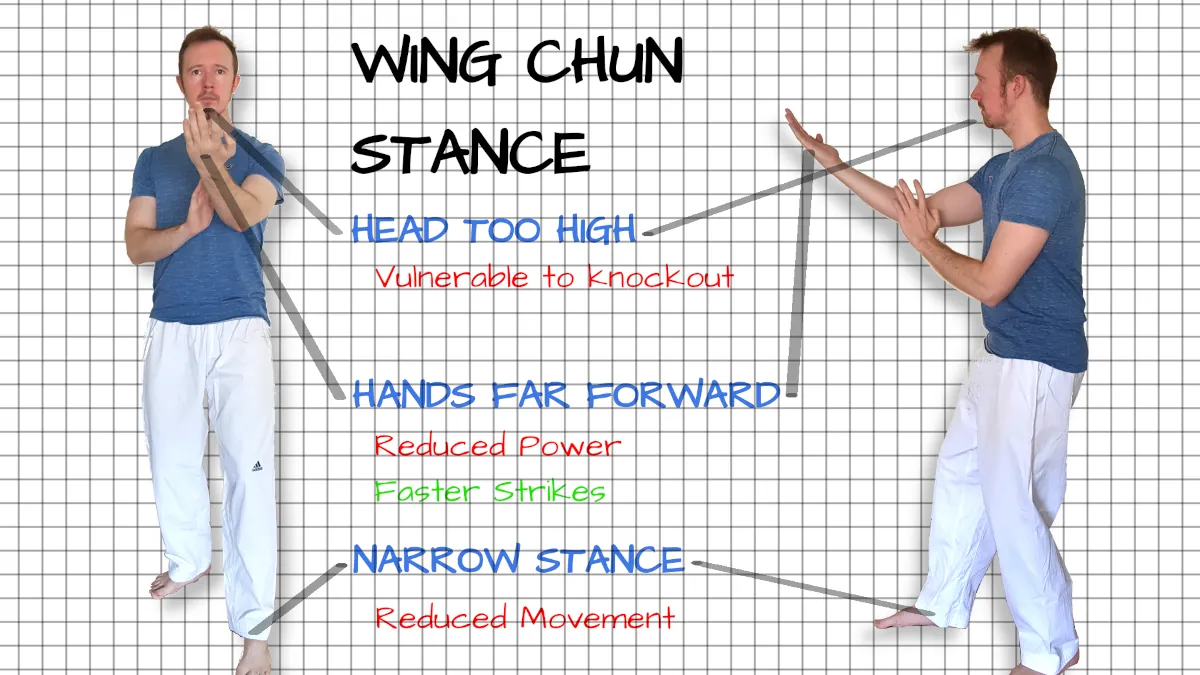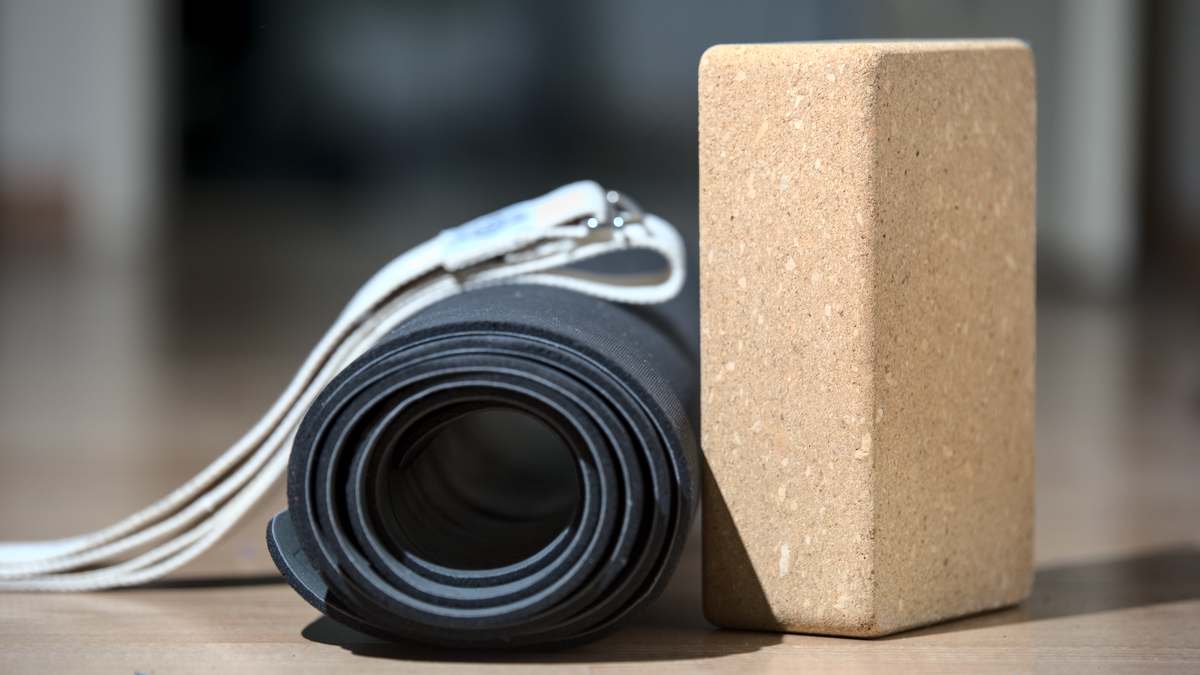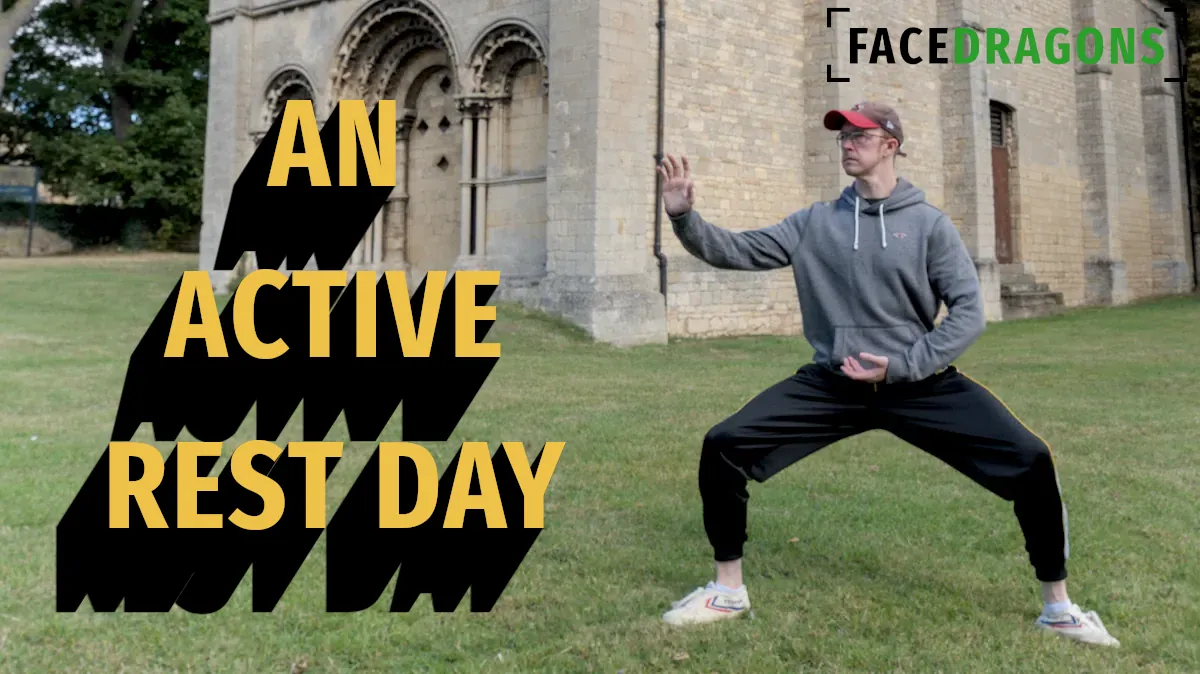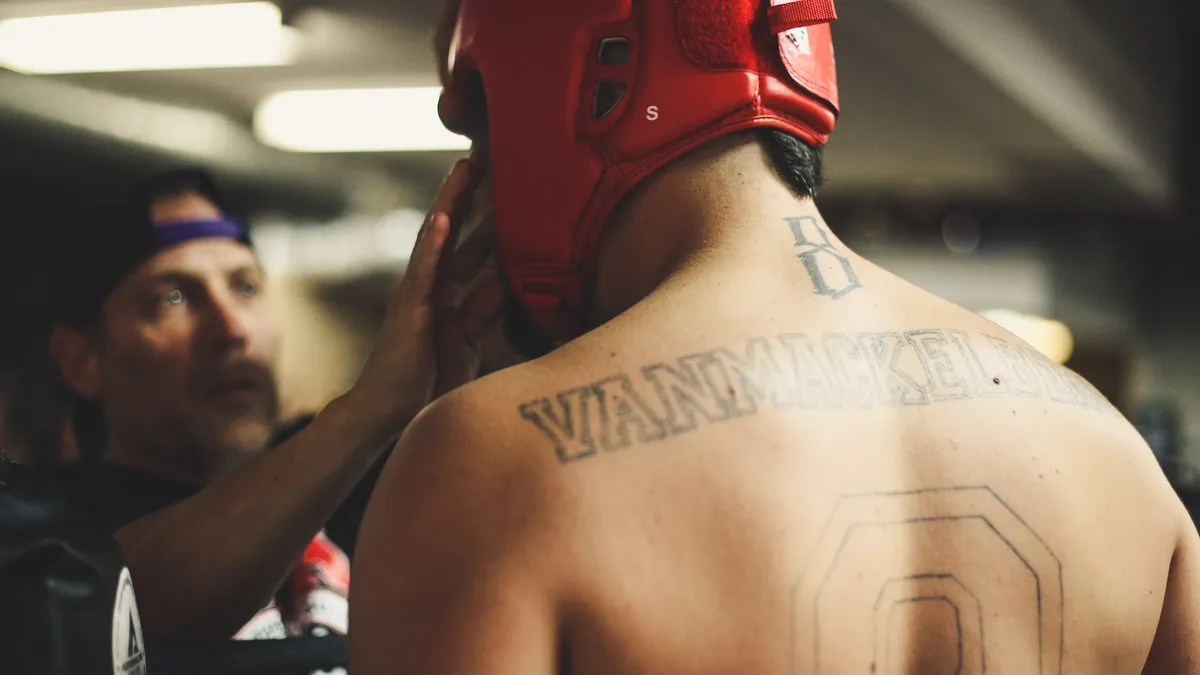In recent years, Wing Chun has again come under fire for being ineffective. This time, it’s not about how useful it is on the street for self-defense. Instead, this round of criticism concerns its weakness in the MMA cage or octagon. After years of martial arts training, including Wing Chun, I want to explore the question, “Is Wing Chun effective?”
Here’s how the criticisms against Wing Chun started this time – In case you’ve been living under a combat rock for the last few years (or just training alone in a cave in the mountains.)
Xu Xiaodong, a now infamous MMA proponent from Beijing, challenged any traditional Chinese martial arts master in China to face him in the ring under Chinese-style MMA (or Sanda) or any style rules.
Of course, some eager masters quickly signed up to teach the young whipper snapper a lesson about the strength of Chinese kung fu and some humility.
Unfortunately (for Wing Chun), one of the competitors was a Wing Chun fighter called Ding Hao. In the fight between them, the weaknesses in the style become glaringly obvious. Despite the Wing Chun artist being willing to engage, aggressive, and well-trained, he was no match for a few basic MMA strikes. (Let’s ignore the controversial decision at the end.)
A year later, having supposedly learned from his mistakes, Ding challenged a muay Thai fighter, Tiger (A Hu.) Tiger ensured no chance for a decision and knocked Ding out in 72 seconds.
Let’s forget the karate vs. kung fu debate for today and look at some of the components of Wing Chun, find out why it fares so poorly in the ring, and answer the question of whether Wing Chun is effective on the street or not.
I have trained in martial arts for the last 30-plus years, including studying wing chun for about five years. The opinions below come from my personal experience.
The Wing Chun Stance
Like most fighting stances, wing chun practitioners stand with one foot forward (usually their weaker side), with their hands up. There’s a reason almost every martial art stands in some variation of this stance. It’s balanced.
The wing chun fighting stance allows the fighter to attack and defend from this position.
With one foot forward, the body is turned and less exposed, and one hand is forward which shortens the distance to the opponent.
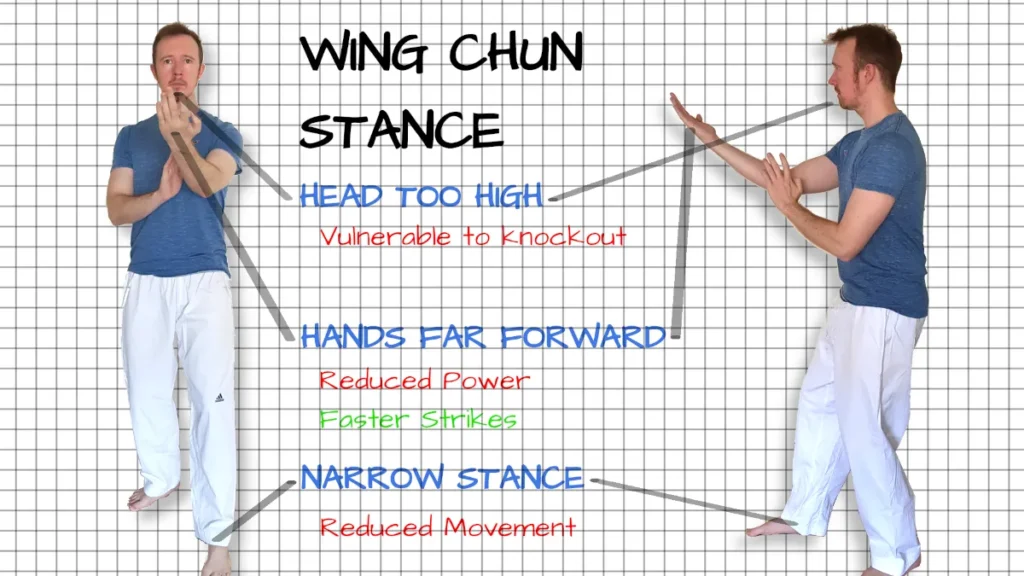
1. Wing Chun Fighters Hold Their Heads Too High
If there is one thing that boxing can teach you, it’s how to tuck your head. Tucking your head protects your chin by hiding it behind your shoulder, making you much more resistant to knockouts. If you’ve ever seen a boxer who wants to humiliate his opponent, he might drop his hands and let them take free shots on his tucked head.
In Wing Chun, the head is held high, meaning the chin is available, and any headshot is more likely to rattle him.
2. Hands Far Forward
With both hands up, attacks can be deflected on the forearms, giving you some defense against incoming attacks.
But as Joe Rogan recently said on his podcast, keeping your hands up to block punches isn’t enough. “People think that completely protects you, no. It gives you a little protection, yeah…You’re still getting hurt, even if you’re blocking with your hands.”
But with your hands held far forward, there is an additional benefit: punches are already halfway to their target, so attacks from a wing chun stance are quick and easy. Contrast this with how a boxer holds his hands much closer to the face, so his punch travels further and takes longer to hit his target.
3. The Narrow Wing Chun Stance Limits Movement
In Wing Chun, you don’t bounce on your toes like a taekwondo fighter; movements are usually small steps, and the stance is kept narrow. This narrow, upright posture makes it nearly impossible to bob, weave, and avoid incoming strikes.
Wing Chun Strikes
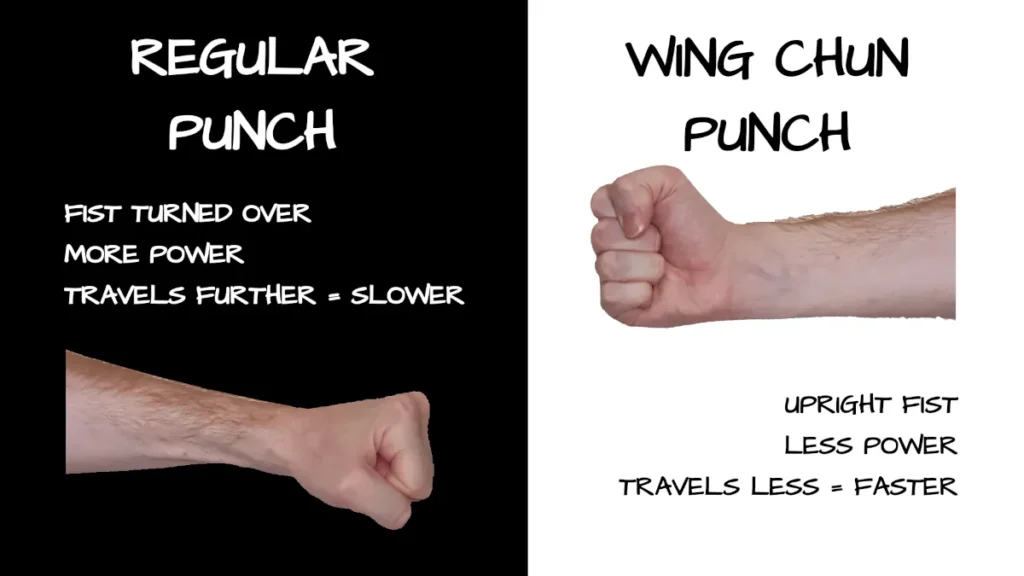
Wing Chun Strikes are short and sharp, making them effective at close range. There’s very little wind-up or preparation.
1. Wing Chun’s Upright Fist Can’t Produce as Much Power
Perhaps the most iconic wing chun strike is the one-inch punch that Bruce Lee popularized. One of the things that makes this strike work is the upright fist.
The upright fist is seen throughout Wing Chun’s punches, unlike in most other martial arts, where the fist is turned over with the thumb underneath.
This is an exchange of power for speed. Without turning over the fist, the power from the shoulder and waist is primarily removed from the punch, leaving mainly the tricep to generate power.
Wing Chun fighters developed the one-inch punch because, without much wind-up, they needed a way to generate power over a short distance. The drawback of holding the hands so far forward is that they simply don’t have enough space to produce much power. It’s another substitution of power for speed.
2. Finger Strikes
Punches aren’t the only strikes in the Wing Chun arsenal, however. The first form, Siu Lim Dao, teaches finger jabs to the eyes, and the third, biu jee, is named after this strike.
It goes without saying that if a style with only three unarmed forms names the final form after a strike, it must be essential to the style. So, finger strikes must be included in the equation when assessing the effectiveness of wing chun.
You can’t poke people in the eyes in the ring, but in the street, when you’re trying to defend yourself or your family, anything goes.
Wing Chun scored 14 out of 25 points when rated against the best martial arts for self-defense.
The deciding factor in whether this technique makes Wing Chun more effective is whether or not you train it. When I learned Wing Chun, we didn’t drill finger strikes to the eyes and I don’t see any safe way to do so realistically.
Wing Chun Strategy
1. Center Line
The most well-known Wing Chun strategy is the center line theory, which states that striking the opponent on the center line is optimal. There are a few reasons for this:
- The center line is the closes point, so strikes need to cover less distance, making them faster
- Striking the center line forces the opponent to absorb all the energy of the strike; they can’t pivot
- Vital points (sensitive areas) are found along the center line, including the solar plexus, throat, nose, etc.
Placing so much emphasis on the center line makes Wing Chun proponents predictable. They’re one-dimensional because they are solely focused on attacking directly forward. A kickboxer or trained karate black belt will understand that they only need to sidestep to overcome this strategy.
2. Blocking and Trapping
A big part of Wing Chun is blocking and trapping; when I learned it, we drilled blocking and striking routines such as “pak da” (slap and strike) over and over.
In the ring or on the street, you quickly realize that attackers don’t always punch straight down the center line or in predictable ways. They feint, jab, throw hooks, and move around. You can’t just slap these punches away like you can in class.
3. Sparring and Training Methods
Bruce Lee said it best, “If you want to learn to fight, you must fight.” Did he learn this from his master, Wing Chun legend Yip Man? Probably. Yip Man was also known as a fearsome fighter.
However, many Wing Chun schools don’t spar, and practicing anything like actual fighting is rarer. This is perhaps the biggest drawback of many traditional styles.
On the other hand, if you train at a school where you regularly spar, compete, and practice self-defense, Wing Chun is practical, especially on the street. You don’t even need a school for some of this type of training; you can learn martial arts at home!
So, Is Wing Chun Effective?
As we can see, Wing Chun isn’t the hopeless martial art that some people would like to make it out to be. Sure, it has some serious weaknesses, but it also has some strengths.
| Wing Chun Strengths | Wing Chun Weaknesses |
|---|---|
| Center-line theory is predictable | Head held too high |
| Strikes are fast and travel a short distance | Punches lack power |
| Finger strikes could end a fight quickly | Narrow stance reduces evasive movements |
| Striking the center line is effective | Blocking and trapping are not realistic |
| Finger strikes are useless in competition | |
| Blocking and trapping not realistic |
Is Wing Chun Effective in MMA?
As we’ve seen repeatedly, Wing Chun doesn’t stand up well in the MMA cage or octagon. In Face Dragons’ own study, we took the top 25 UFC champions and analyzed the martial arts styles they learned – it turns out that none of the greatest UFC champions train Wing Chun. What to find out which styles were top, check out the link above.
Giving up power for speed doesn’t translate well in a sport with opponents used to getting hit in the face, not to mention that even 6 oz gloves really take the sting out of a punch with no weight behind it.
Wing Chun completely lacks a ground game, and in MMA, everyone knows how to take you down and keep you there. Taking a Wing Chun fighter to the ground is an easy route to victory.
Is Wing Chun Effective in the Street?
Wing Chun stands a much better chance on the street than in the MMA ring. The emphasis on hand strikes, fast punches, and hitting first may stop an attacker in its tracks. According to a study by High Percentage Martial Arts (Now defunct), “The average length of all fights was forty seven seconds”. So, hitting first and early is much more important than in an MMA fight, where a fight might run 15 minutes in total.
“The average length of all fights [street fights] was forty seven seconds”
High Percentage Martial Arts
Likewise, an early eye strike may make your attacker think twice about continuing.
Still Unsure?
If you’re still not sure whether you should learn wing chun, why not check out this guide on choosing a martial art to learn?
Meet Gregory, a writer and the brains behind Face Dragons. He's the go-to guy for getting things done.
Gregory's been living the digital nomad life in Asia for as long as anyone can remember, helping clients smash their goals. He writes on topics like software, personal knowledge management (PKM), and personal development. When he's not writing, you'll catch him at the local MMA gym, nose buried in a book, or just chilling with the family.

